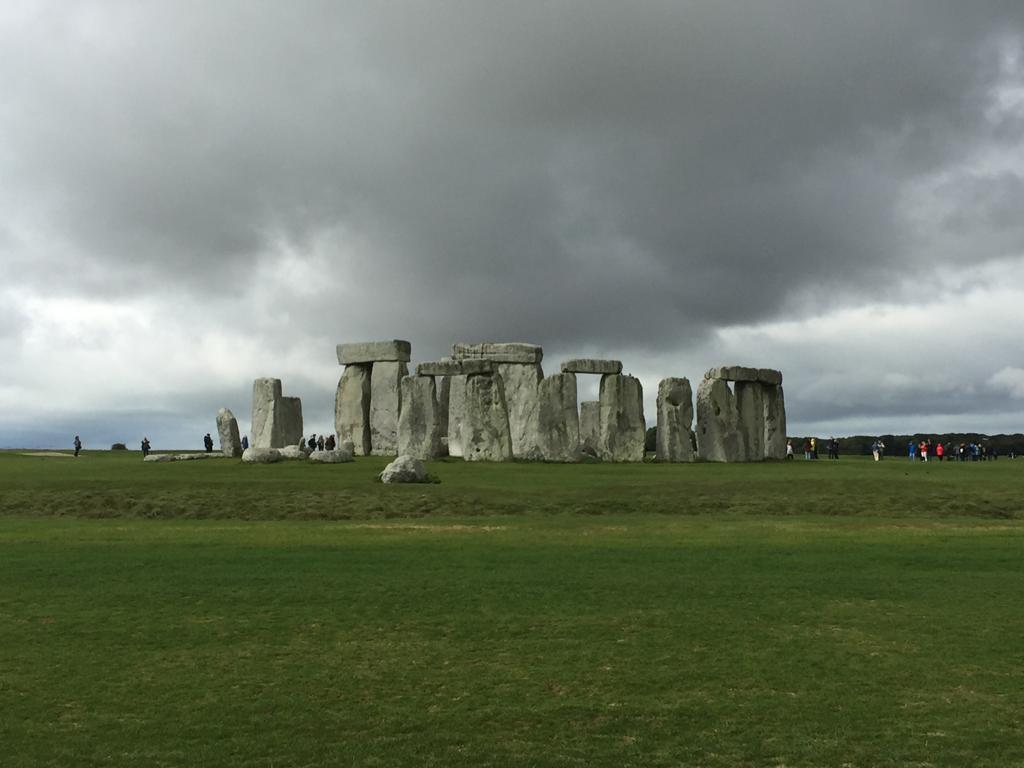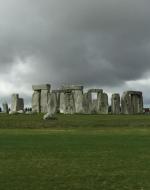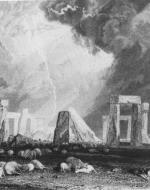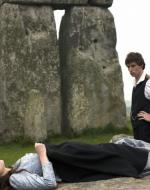Created by Calen Olegnowicz on Sat, 11/06/2021 - 15:37
Description:
Stonehenge is a Megalithic structure and English Heritage site constructed between 3000 and 2000 BC by the Neolithic inhabitants of Southwest England. The exact purpose of these stones has remained unknown in the millennia since its construction, and it has occupied the imagination of the English for just as long. The stone structure appears in Arthurian legend as a memorial to the fallen soldiers of King Ambrosias. According to Geoffrey of Monmouth's history of England, Merlin constructed the monument for those slaughtered in Salisbury Plain by the Saxons. This was considered fact through the Middle Ages, and though this tale was eventually replaced by archaeological reasoning, this image of violence and slaughter stuck with the English into the Victorian period. Stonehenge made its way into British culture, through artists like JMW Turner and novelists like Thomas Hardy, as a symbol of England's violent pagan heritage.
Stonehenge. Photograph by Suzanne Jewell, 2019.
While the Victorians had moved past believing this legend as fact, they still understood the construct as one relating to mysticism and bloodshed. Antiquarian William Stukeley theorized that Stonehenge had a strong connection to Celtic paganism and druidism. He promoted the belief that the structure was a cite of ritual sacrifice. The site is composed of a series of rings surrounding a central horseshoe shape and an altar, all made from standing stones and trilithons, a majority of which have fallen over time. One stone remaining from an outer ring lays flat on the ground where it collects rainwater. The stone was known to the Victorians as Slaughter Stone due to a red pigmentation in its surface, and it was believed that this stone specifically was used for druidic sacrifices. Though we now understand this to be iron deposits in the stone that react to the rain, in absence of sufficient evidence, the violent historic conception took over.
Whatever the original purpose, much of the modern function of the site has been for tourism. Throughout the late 19th and early 20th centuries, several attempts were made to restore the original structures of the central horseshoe arrangement to allow visitors to better imagine the monument built by the ancestral occupants of the land. Today, the site is maintained by the English Heritage foundation, and it still acts as one of the most major tourist sites in the country.
"Stonehenge," J. M. W. Turner, 1838, engraving, from Picturesque Views in England and Wales, photograph by Elizabeth K. Helsinger, the Joseph Regenstein Library, the University of Chicago.
Turner's drawing showcases the Victorian view of Stonehenge. John Ruskin wrote of this piece: "All its forms are marked with violent angles, as if the whole muscular energy, so to speak, of the cloud were writhing in every fold: and their fantastic and fiery volumes have a peculiar horror, an awful life, shadowed out in their strange, swift, fearful outlines which oppress the mind more than even the threatening of their gigantic gloom" (Modern Painters I, Library Edition: 3.413, The Victorian Web). The violence Turner depicts in this site is further enforced by the flock of sheep strewn across the landscape. There remains an uncertainty about the herd's state of being. While some sheep are clearly alive, others are posed in a deathlike slumber. The herd as a whole is reminiscent of the after effects of a battle where slaughtered soldiers lay, and survivors try to recover. When Stonehenge is mentioned, this image of violence and massacre often enters the Victorian mindset.
D. A. Wehrschmidt, "Something Seemed to Move on the Verge of the Dip Eastward," for Thomas Hardy's Tess of the D'Urbervilles (1891), Scanned by Philip V. Allingham, The Victorian Web.
The final chapters of Tess of the D’Urbervilles lead Tess to the ancient Megalith where she finally rests from her pursuers. She says to Angel Clare, “'One of my mother’s people was a shepherd hereabout, now I think of it. And you used to say at Talbothays that I was a heathen. So now I am at home.'” Tess violates the Victorian sense of morality making her, socially, a heathen. When she lays upon the warm stone to rest, she is figured as a sacrifice, and so she becomes a sacrifice to the strict nineteenth-century laws. Before she is carried off to her death, her final moments of peace are at a place often associated with violence. Wehrschmidt’s illustration showcases the drama of this scene through his use of lighting and selective detail. Tess, as she lays upon the stone, seems so serenely at peace in the face of impending doom. The shroud-like illumination of her dress gives an eerie contrast to the dark stone and shadows she is surrounded by.
Tess of the D'Urbervilles. Directed by David Blair for the BBC, 2008.
Stonehenge's cultural importance is maintained to the present day. Film adaptations of Thomas Hardy's novel, such as David Blair's, reinforce the importance of the monument. In this clip, Tess played by Gemma Arterton, lays on the stones of Stonehenge with Angel, performed by Eddie Redmayne, who gazes upon her. The original Tess of the D'Urbervilles is itself referential to the past through Hardy's inclusion of Stonehenge, and its further reiteration in film adaptations including Blair's serves to perpetuate the site as a foundational element of English culture. What served Hardy as a point of narrative reference remains intertwined with for our contemporary perception of this heritage site.





